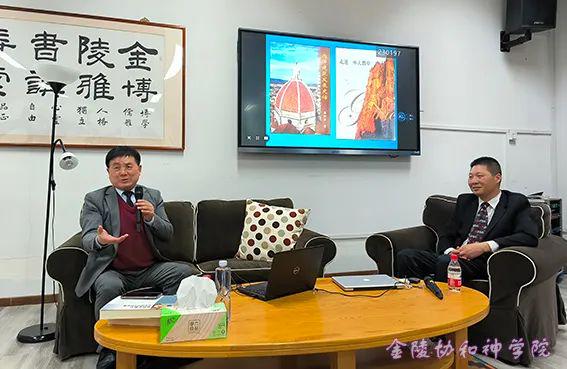A professor from Shanghai University has urged historic churches in China to sort out their history and recognize their churches’ cultural significance.
In a recent lecture titled "Codes of European Church Art" at Nanjing Union Theological Seminary, Professor Xu Zhenglin outlined the evolution of European church architecture and highlighted the connections and context among faith, churches, and art. During the lecture, Professor Xu emphasized the significance of the emergence of churches, which extended to the meaning of on-site worship, providing new insights for Christians tending to attend services online in the new media era.
Besides, Xu noted a current trend that, in the new media era, certain young believers prefer watching church services on their mobile phones rather than attending in person. This shift was an outcome of the pandemic, with online attendance becoming a convenient habit for some congregants, leading them to forgo onsite church gatherings even after the pandemic period. Despite being a non-believer, Professor Xu held that true worshippers should attend onsite church services due to the emphasis on rituals in every culture. Moreover, the true function of a church is to allow onsite attendance, as attending online services does not provide Christians with the same spiritual experience as attending services in the church.
For churches in China nowadays, religious needs are still the inherent needs of believers. Meanwhile, following the sinicization of Christianity, church architecture and art must integrate Chinese cultural elements and convey Christianity within the Chinese context through various forms of Chinese culture.
Currently, certain newly constructed churches have embraced Chinese cultural elements while also reflecting religious symbolism, resulting in the emergence of new-era Chinese churches with unique regional characteristics. Throughout the history of Christianity's introduction to China, missionaries attempted to integrate Christianity and Chinese architectural forms. For example, built in a Chinese classical palace style, the Gospel Church in Suzhou City was listed as a provincial cultural relic protection unit in Anhui Province in 2012, serving as a notable example of the integration of Christianity and Chinese culture.
The professor mentioned that there are historic churches in China with rich faith and cultural connotations, yet their information on the Internet is limited. He advocated for churches to recognize the cultural significance of their churches by documenting their history and establishing tour guides to educate the public about their history.
- Translated by Poppy Chan












